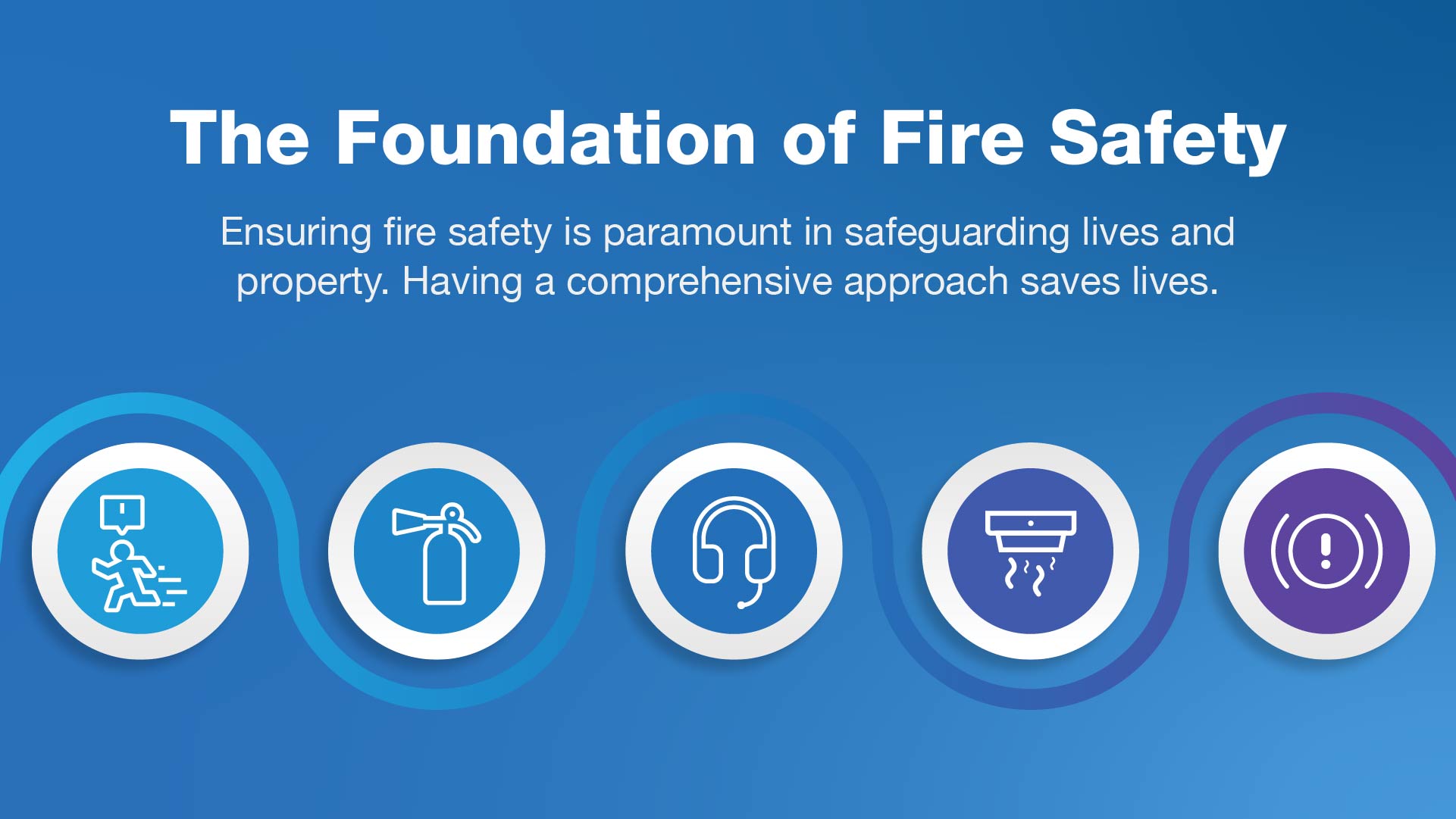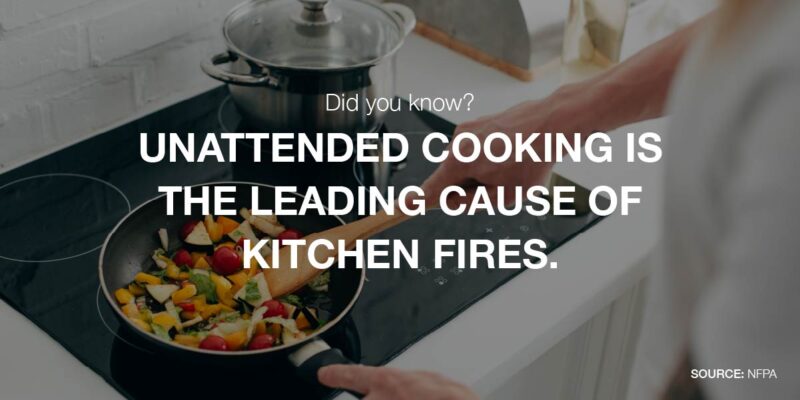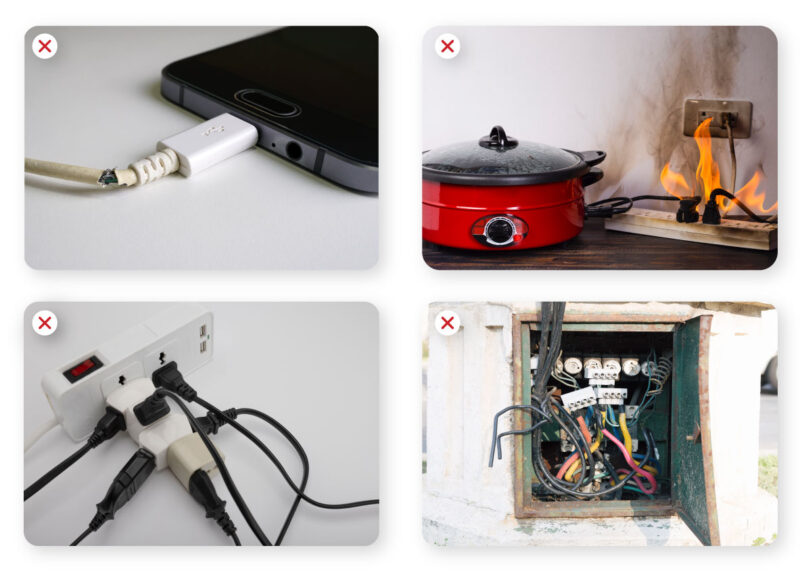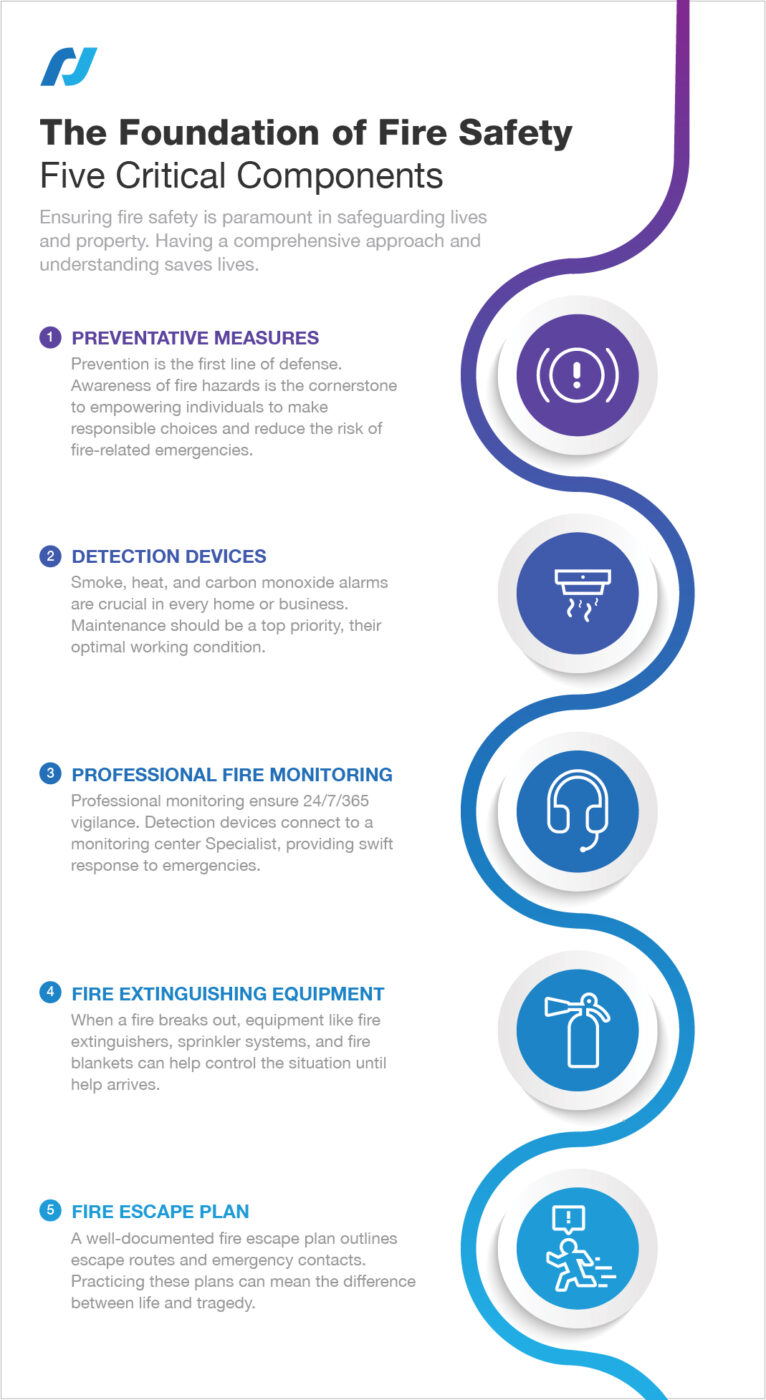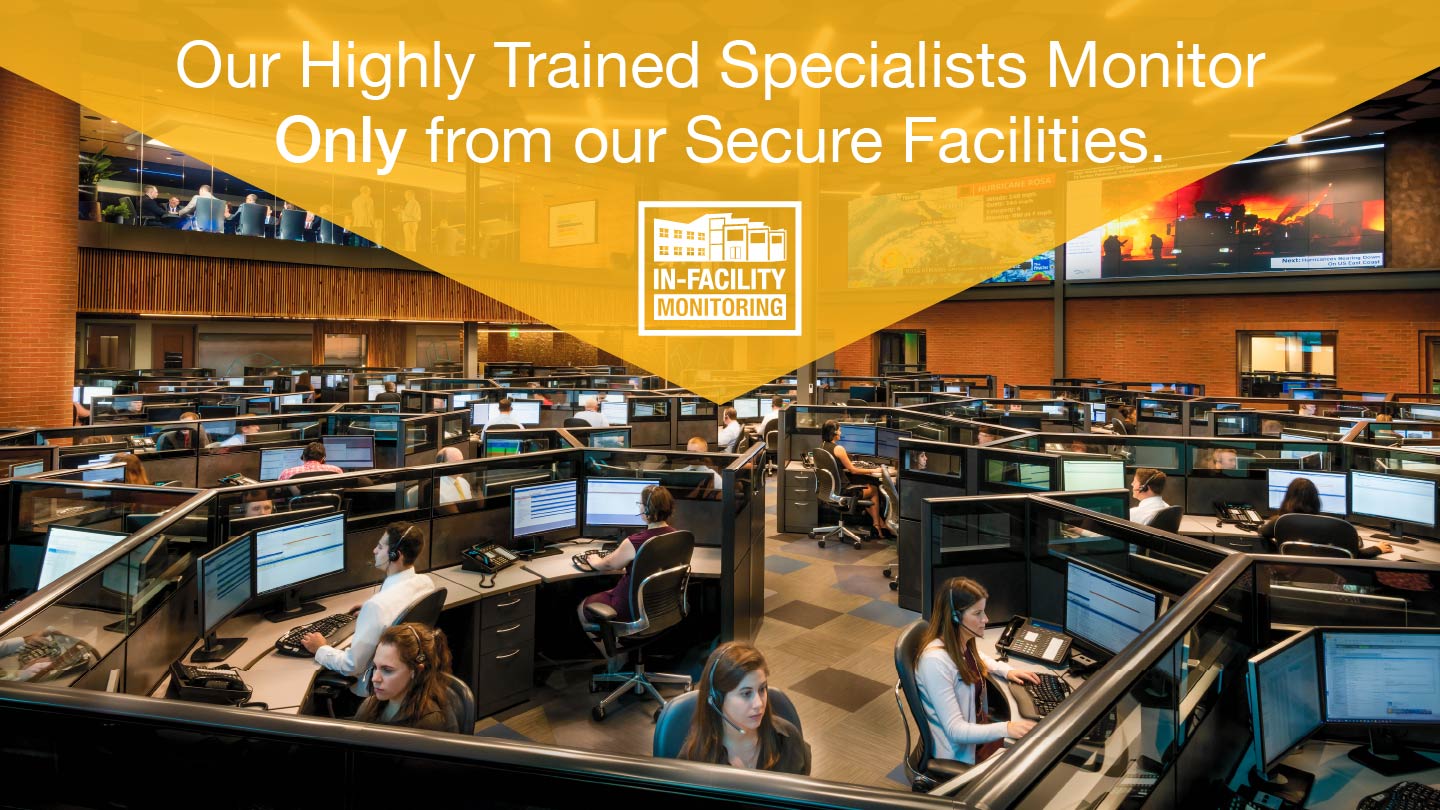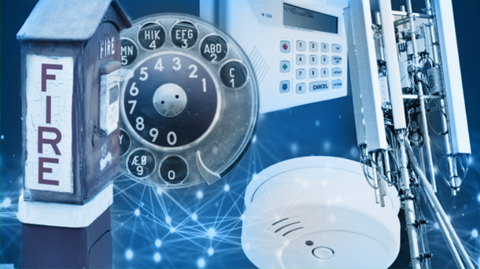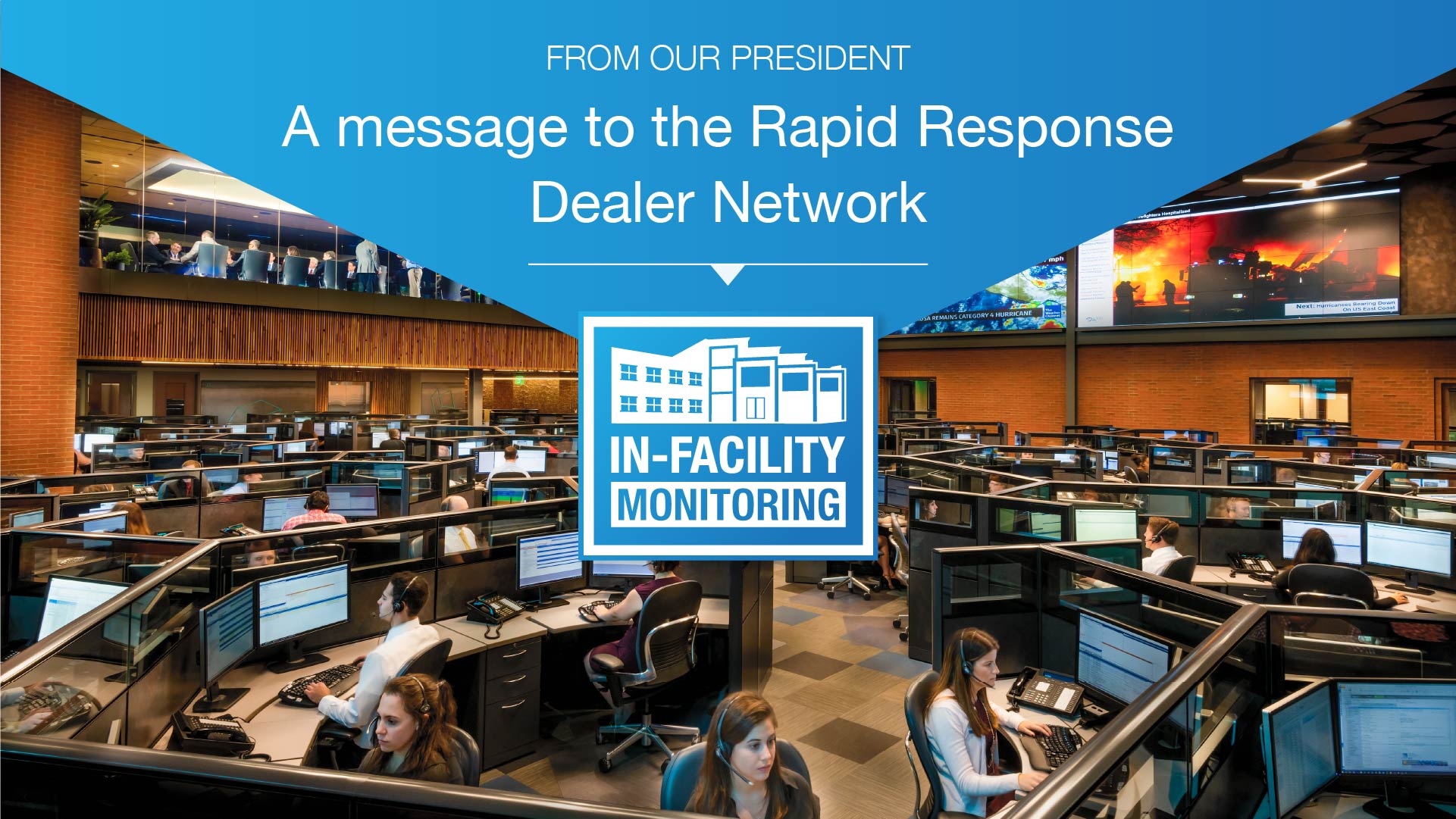Fire safety awareness is paramount in ensuring your home, business, and loved ones are kept safe in the face of an emergency. By being proactive and remaining informed, you can significantly reduce the risk of fire-related incidents.
Furthermore, it’s worth noting that many home insurance providers offer reduced monthly premiums when presented with proof of a professional monitoring subscription. This not only enhances your safety, but also leads to potential cost savings on your insurance policy.
Cooking-related Hazards
Unattended Cooking
According to the National Fire Protection Agency (NFPA), unattended cooking is the leading cause of kitchen fires. It’s tempting to step away from the kitchen, especially when you’re in a hurry or multitasking.
However, a simple distraction can result in a fire breaking out.
Tip! If you must leave, ask someone to watch the food or set a timer as a reminder. It’s a simple habit that can be the difference between a meal and a fire emergency.
Grease Fires
Grease fires are particularly dangerous because they can escalate rapidly. When cooking with oil or grease, it’s crucial to take extra precautions to prevent such fires. The high temperature of cooking oil makes it susceptible to ignition. If the oil becomes too hot, it can produce flames within seconds.
To handle grease fires safely, keep a lid nearby while cooking with oil. In the event of fire, cover the pot or pan with the lid, as fire cannot exist without oxygen.
Never use water to extinguish a grease fire, as it can cause the burning oil to splatter and spread the fire.
Faulty Kitchen Appliances
Faulty or poorly maintained kitchen appliances can pose a significant fire hazard. Over time, electrical connections can weaken, cords can fray, and components might malfunction. Ignoring these issues can lead to electrical fires that can quickly escalate.
To mitigate these risks, it’s critical to conduct regular maintenance. This includes cleaning, inspecting cords for damage, and checking for any signs of overheating, strange odors, or unusual sounds during use.
Additionally, make sure your kitchen appliances have proper ventilation and adequate clearance around them to prevent overheating. Regular servicing by a professional can also help identify and rectify potential problems before they become serious concerns.
Maintenance keeps your kitchen safer, but also extends the lifespan of your appliances, saving you money in the long run.
Electrical Hazards
Overloaded Outlets and Circuits
Circuits have a maximum capacity. If that capacity is exceeded, the circuit can overheat, spark, and, ultimately, start an electrical fire.
To prevent overloads, never plug in multiple high-wattage devices, such as appliances, simultaneously into the same outlet.
Another preventative measure is to use power strips with built-in circuit breakers, which automatically cut power when they detect overloads. Avoid daisy-chaining power strips, meaning plugging power strips into other power strips.
Damaged or Frayed Cords
Damaged or frayed cords are a visible and immediate electrical hazard. These cords can expose wires, creating a risk of electrical shock or fire. Common causes of cord damage include physical wear and tear, bending, pinching, and exposure to moisture.
Faulty Wiring
Faulty wiring is a hidden and potentially severe electrical hazard. It is most common in older homes or businesses. Signs of faulty wiring may include flickering lights, circuit breakers frequently tripping, or a burning smell around electrical outlets or fixtures.
If you suspect faulty wiring, it is crucial to conduct a thorough inspection and make necessary repairs. Investing in a professional assessment of your electrical system can provide peace of mind and reduce the risk of electrical fires.
Heating Hazards
Space Heaters
Space heaters are a popular source of supplemental heating, but if not used carefully, they can pose significant hazards.
To prevent accidents, it is important to ensure adequate clearance, purchase safe, UL Certified models, never leave them unattended, and as we mentioned previously, be mindful of where you plug them in.
Fireplaces and Wood-Burning Stoves
Fireplaces and wood-burning stoves provide warmth and ambiance, but they also present fire and carbon monoxide (CO) poisoning risks.
To use fireplaces and wood-burning stoves safely install professionally monitored CO detectors, ensure proper ventilation and never use unapproved fuels, such us cardboard, trash, or treated wood. Use only well-dried and seasoned wood to reduce creosote buildup (a wood preservative and probable carcinogen) and CO emissions.
Furnaces
A furnace is a reliable source of heat, but it requires regular maintenance to operate safely and efficiently, including changing the filter, annual inspections, and ensuring vents are free of obstructions. Neglecting furnace maintenance can lead to fire hazards and carbon monoxide leaks.
Additional heating-related tips for minimizing fire hazards include:
1. Never use your oven to heat your home
2. Always turn off portable space heaters before leaving the room or going to bed
3. Have a three-foot “kid-and-pet-free zone” around fires and space heaters
Open Flame Hazards
Candles
Candles are commonly used for decorative and aromatic purposes, but they pose a fire hazard if not handled properly. To ensure candle safety, place them on a stable surface out of reach from children and pets. Be sure to never leave burning candles unattended.
Lanterns and Torches
Lanterns and torches are often used for outdoor lighting and ambiance. To ensure safety, only use the recommended fuel for the lantern or torch, and store it safely away from the open flames, ensure they are securely anchored, and keep them away from any flammable materials.
Be Prepared: Equipment and Resources for Fire Safety
No matter how proactive one is, accidents can happen. If a fire starts, there are multiple tools and resources available to help you navigate the emergency.
Fire Extinguishers
Keep at least one fire extinguisher in your kitchen and another in an easily accessible location. Make sure you know how to use them.
Fire Blanket
A fire-resistant blanket can be used to smother small fires or wrap around a person to protect them from flames.
Fire Escape Ladder
Consider installing fire escape ladders, which can be attached to windows, on multi-story homes or commercial properties to provide a safe exit in the event of a fire.
Fireproof Safe
Store important documents, passports, and valuables in a fireproof safe to protect them from both fire and smoke damage.
Fire Escape Plan
Have a well-defined escape plan for your family and co-workers, including a designated meeting point outside, and practice it at least once a year.
Masks
Masks can help protect your lungs while escaping from a fire. If masks are not within reach, use your t-shirt.
Pets’ Safety
Have a plan for your pets’ safety, such as pet carriers or leashes on hand, to ensure their safe evacuation.
The Role of Professional Monitoring in Fire Safety
We cannot emphasize enough the pivotal role of fire detection devices in commercial and residential settings, complemented by the unmatched peace of mind afforded by professional monitoring.
Professional monitoring is a critical component of comprehensive risk mitigation. It operates continuously and diligently, 24/7/365, to address and respond to potential fire emergencies, even when the end-user is not present. This constant vigilance minimizes response times, a critical factor when seconds can make all the difference in averting disaster.
Moreover, at Rapid Response, we are in constant communication with home or business owners when emergencies arise with rapidSMS. Proactive communication is a key component in the safety chain, ensuring that all necessary parties are informed and can respond accordingly.
Professional monitoring is a comprehensive solution that combines the precision of early detection with the swift action of both Rapid Response and emergency services, offering peace of mind with an added layer of protection.
